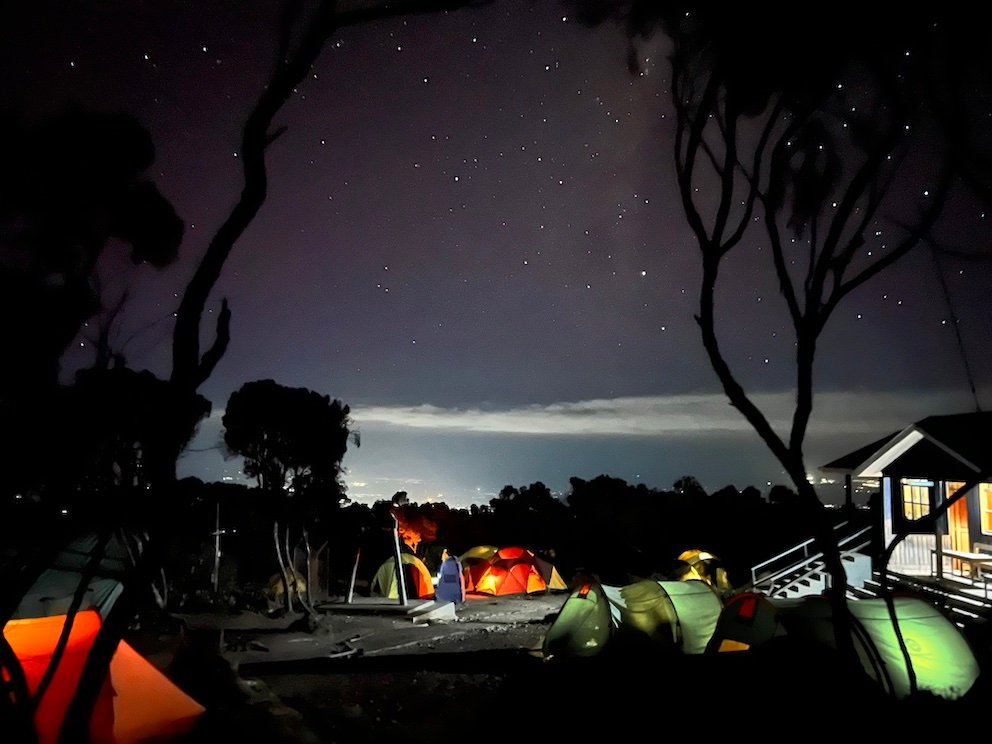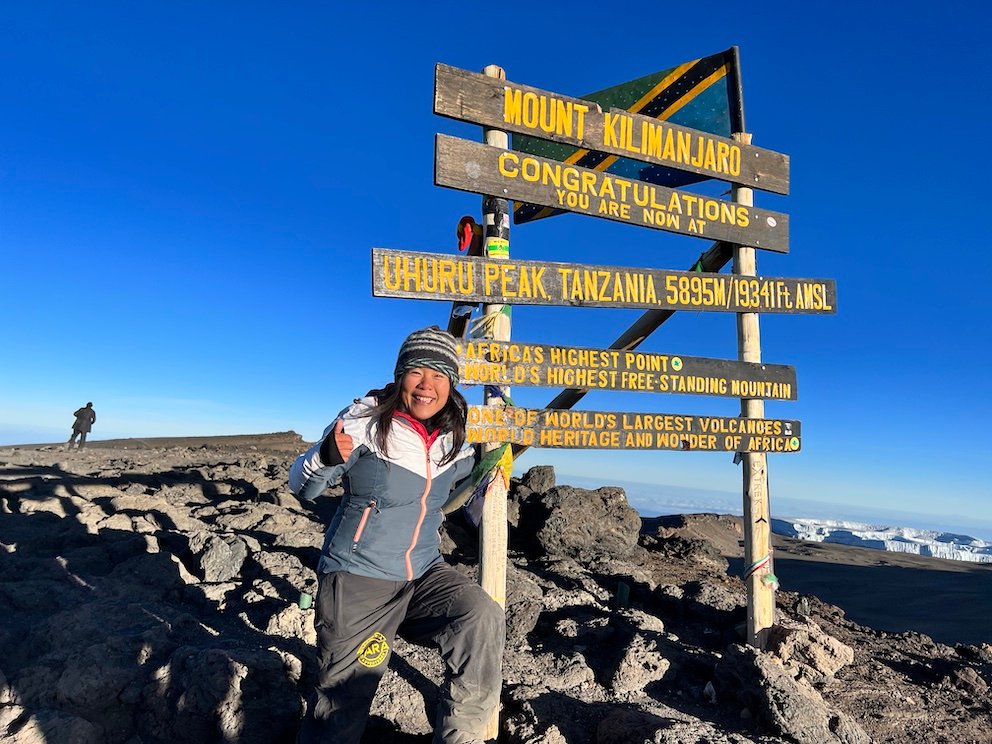Day 5: Today we will summit Kilimanjaro. I woke a little before 11pm, to the sounds of other trekking groups starting to get ready for the summit. Barafu base camp was quietly awakening with nervous energy. The wind howled outside, and it felt like the whole tent was going to be ripped right off the ground with me still in it. “Surely they must postpone summit attempts in times of bad weather” I thought, still somewhat in disbelief that I’m supposed to be starting a trek to the highest peak on the African continent in an hour.
This post includes affiliate links. If you make a purchase via one of these links, I may receive a small percentage at no extra cost to you.
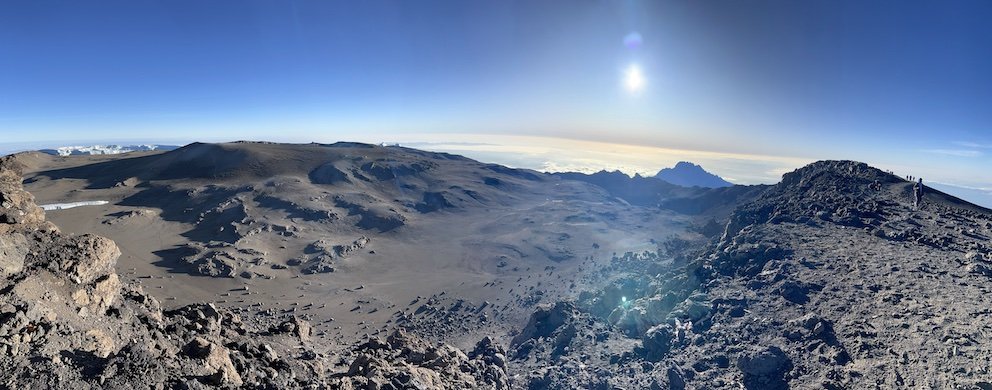
My anti-reverie was interrupted when Evans the waiter rapped on the outside of my tent stating “it’s time to wake-up.” Methodically, I began putting on my summit clothing. Three merino base-layers, one merino hoodie, a down jacket, and my rainshell on top. A pair of tights, two pairs of pants along with my rented rain pants on the bottom. I felt like a veritable Christmas turkey.
I popped out to have a bowl of porridge in the breakfast tent with Alberto. A quiet nervous tension permeated as we ate, by the light of our headlamps. Neither of us said very much, we were both focused on our own thoughts, fears and nerves over the incoming summit attempt. Alberto seemed more confident than I was – and of course he would be – having climbed extensively in the high alps, and also making Everest basecamp which was already at 5500 meters. But I was incredibly nervous. Thoughts of failure danced through my brain and I struggled to flush my brain of the idea that I would not make the summit before even starting the attempt.
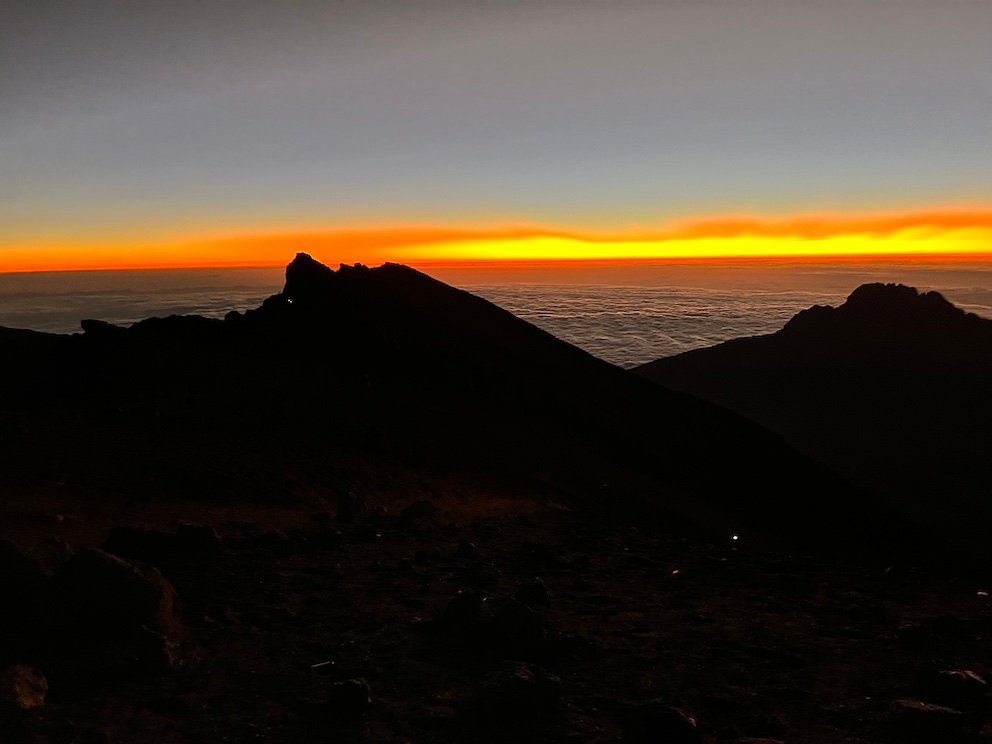
We set off a little after midnight. Following Victor with only the light of our headlamps illuminating the path before us. Oscar, our Assistant Guide brought up the back of our group of 4. Most Kilimanjaro summit attempts start at midnight and end with watching the sun rise over Africa on the summit. While the concept is romantic, when you’re trudging through gale-force winds at midnight, while sleep-deprived, exhausted, and mildly hypoxic, part of me was wondering whether they made us get up at midnight for the summit attempt because we’re too dazed and confused to question the sanity of what we were doing.
The winds died down an hour or so after we set out, and we joined the long line of hikers slowly trudging up the switchback path up the mountain. Noticeable only by the lights of their headlamps the line of hikers looked a string of lights zig-zagging up a giant Christmas tree in the night. I tried not to look too far up though for fear that I would become discouraged if the lights went too far up into the sky.

One foot ahead of the other, focus on the moment, no point to getting ahead of myself by looking up. At times though, I couldn’t help but look up. I would see a couple of lights way up in the sky and my heart would sink a little, but my self-preservation and desire to make the summit would kick in and I would tell myself that the lights were just stars in the sky and not other hikers. When the stars would move, I would chalk it up to exhaustion making me see things that were not there.
I refrained from asking for any breaks even though I was exhausted. I knew if I stopped for too long, or if I sat down; and I was not yet more than halfway, it would be doubly hard to make the summit. We passed stationary hikers along the way early on who looked like it would take the might of Hercules to make them get up and start moving again. One man was trying to reason with his girlfriend who was sitting on a rock that she had to get moving, and that there should be no more breaks – his words did not seem to penetrate as she stared blankly into the space in front of her.
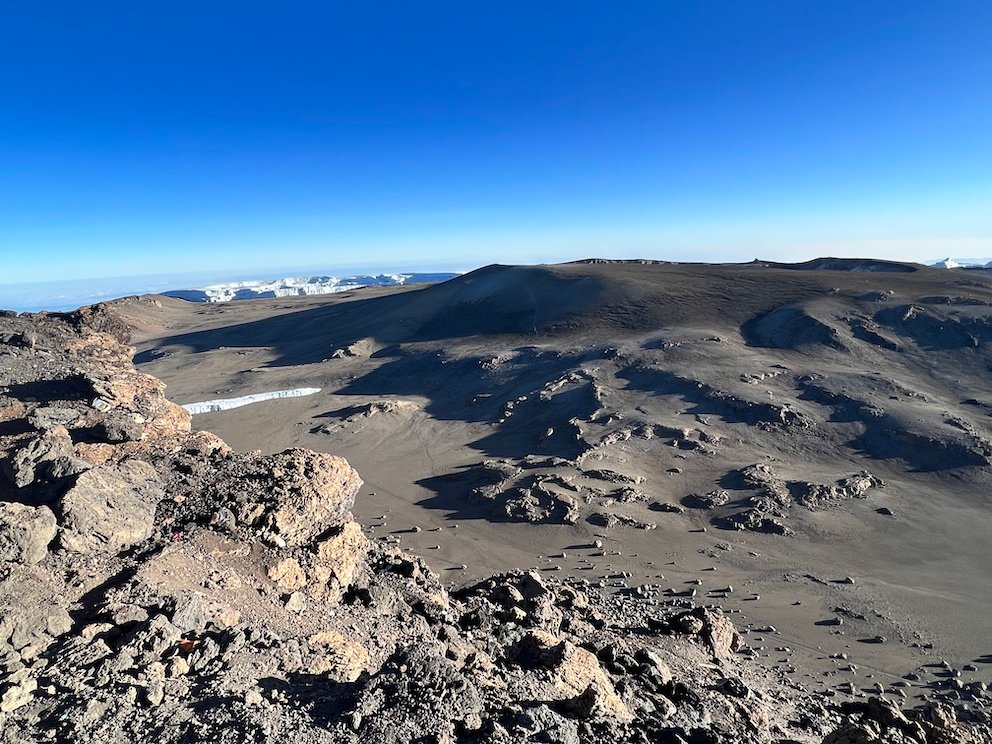
The high altitude was doing funny things to my stomach and digestion, and I could not stomach even the idea of eating anything. Thankfully I had a juice box that Victor had provided, which was the only thing that I was able to consume of the pile of snacks the team had left Alberto and I on the breakfast table to bring on the summit attempt.
I breathed my first sigh of relief a few hours into the trek when we took a break, and Victor informed us that we were at the 5500 meter mark. Alberto was starting to fade at this point. He was strong the entire trek, but we all knew something was amiss when Victor asked if we were all doing ok and for the first time in 5 days, Alberto said “this is starting to get hard.” Men under the age of 30 have the lowest completion rate on Kilimanjaro – paradoxically in part due to their fitness and muscle mass – when there is less oxygen, all those muscles start to strain.
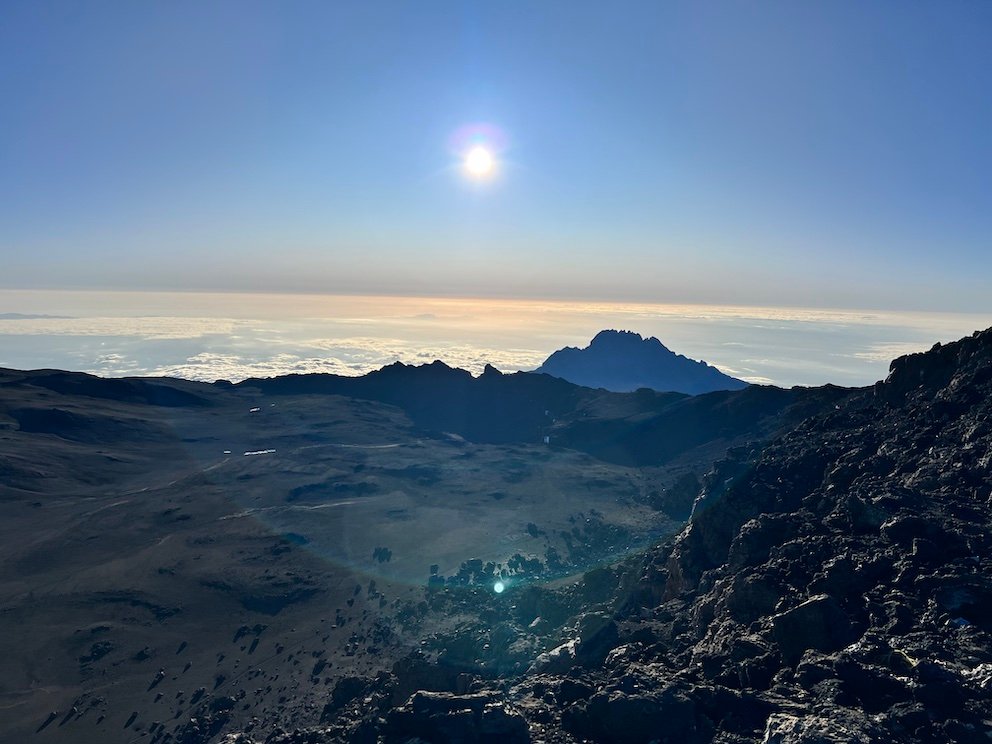
We took a break, and Oscar, magically pulled out some mugs and a large thermos of sweetened ginger tea! Oh my gosh did that magical hot elixir breathe life into my body! The ginger helped settle my stomach and the sugar in the tea were about the only calories that I was able to take in since the juice box I had over an hour earlier. Oscar was wearing two backpacks to carry the thermos up to the summit with us – what an absolute savior. Victor took out some cashews and insisted that Alberto and I eat some. I ate a few, but my stomach rebelled, and I put the rest of them in my pocket. God bless our guides – they really were doing everything they could to get us to the summit!
I felt my breath start to get short as we approached Stella point, and while I would not sit down for a break, I had to stop at times to catch my breath before moving on. I really felt myself fading and Victor, likely sensing this – kept telling me how close we already were to Stella point. I took one final stop to catch my breath, and I could finally see the wooden placard at the top of the ridge ahead. The sight of Stella point amidst the brightening sky at dawn breathed life and adrenaline into my body, and we finally got up the ridge.
We were spent, but allowed ourselves to triumph for a few minutes on this last ridge before the summit. Oscar pulled out the last of the ginger tea, and we all had some before readying ourselves for the final 45 minute push to the summit. I took off my backpack and gloves briefly to take a photo by Stella point – and came back to my camelback tube promptly frozen as well as my gloves – also frozen solid.
I was having a sluggish time restarting given my new frozen equipment situation, so Oscar got Alberto moving again ahead of Victor and myself – as staying stationary for too long in the cold would sap energy even further.
With Victor’s help I snapped my frozen equipment and gloves back on my body, and started the final push towards the summit.
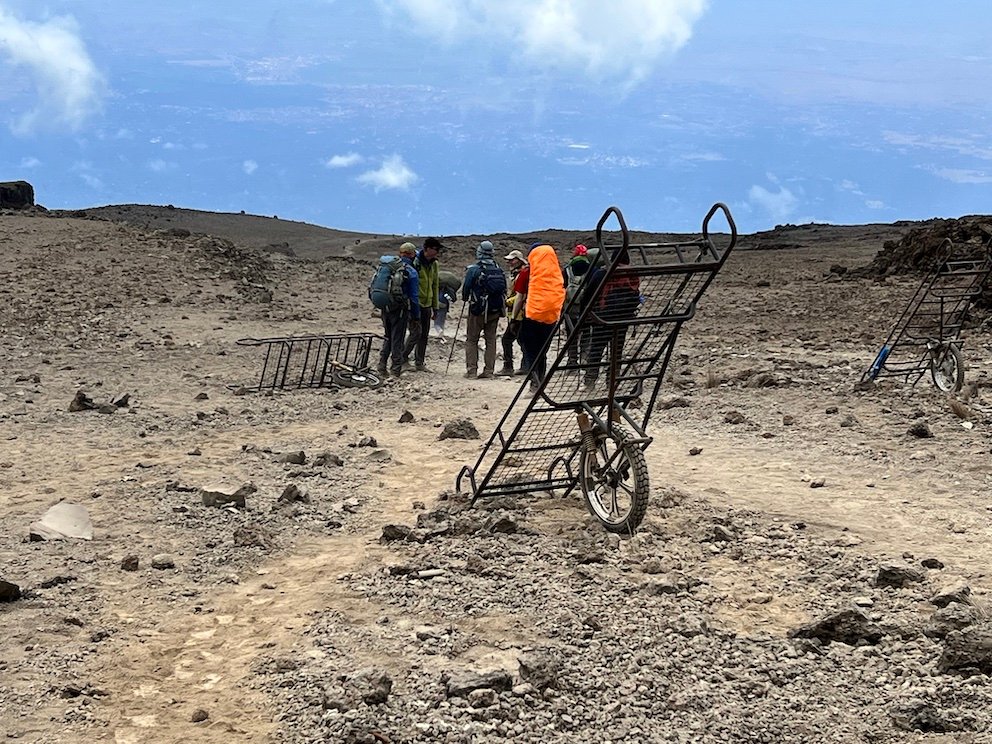
Uhuru peak is only about 100m of elevation higher than Stella point, but not having climbed Kilimanjaro before, I had no frame of reference of how long of a walk it actually was. I was just exhausted, and Victor was doing everything he could to keep me moving forward – and not stop for too long when I took breaks to catch my breath.
The sun was starting to rise in earnest and the most beautiful sunrise appeared above the cloud field underneath Kilimanjaro – it was a sight I can only commit to memory as I was too intensely exhausted (and my fingers too frozen) to try to take a photo of what I saw.
Finally, Victor pointed a short distance away and said “Do you see the peak over there?”

Sure enough, I saw people gathered around a wooden sign – that had to be it! My pace picked up as the adrenaline surged in my body. I heard someone behind me vomit – I could not turn around given just the sound of someone vomiting almost made me vomit as well.
At 6:47am, I arrived at Uhuru peak. Our team hugged each other and gave high fives all around, and we only had to wait for one group to finish taking photos at the summit sign before we had our turn to take photos as well.
Adrenaline absolutely singing in my body at this point, I felt immense joy, relief, satisfaction, wonder and gratitude surge in my body. I took a video and my voice cracked and tears welled up in my eyes as I said aloud to myself that this was the “Hardest thing I have ever done.”
I felt like I had been reborn.
After fully taking in the joy of summiting Kilimanjaro, our team started the long trek back down to Barafu base camp.
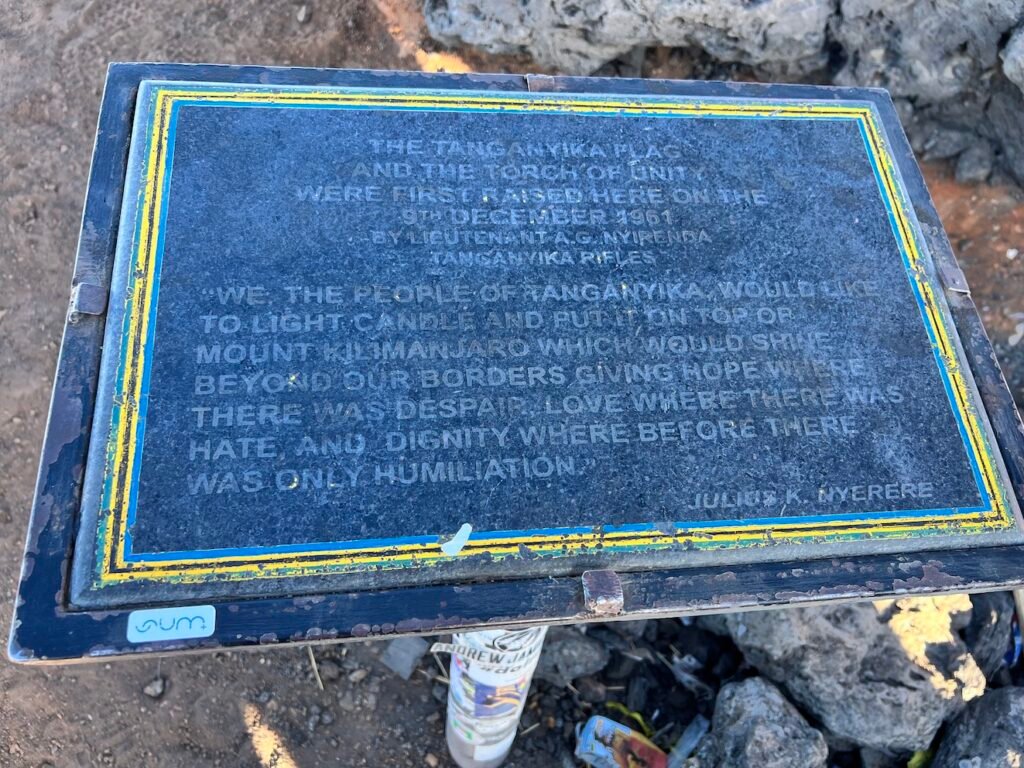
It is incredible how different it feels heading down the same path we just trudged up to the summit after being filled with adrenaline and endorphins from making our goal. Trekkers still trudging up to Kilimanjaro summit look up almost incredulously at those of us making our way back down at the literal spring in our steps as we nearly dance our way down the path that we were similarly slogging through less than one hour earlier.
There were sections of the path that we basically skiied down in scree (loose rock particles resembling sand). Alberto and Oscar were much quicker at this, while I was more cautious with the skiing aspects of the descent. What took us over 6 hours to climb, took about 2 hours to descend.
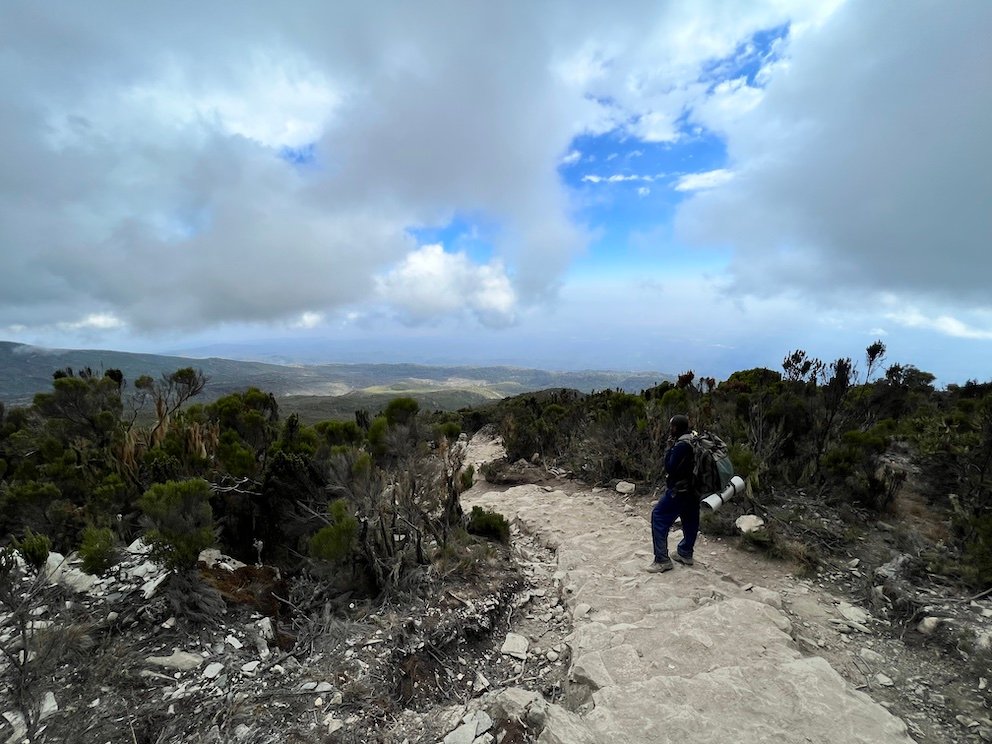
We were all back at Barafu base camp by around 9:30am. I promptly headed back into my tent for a couple of hours of rest, and was awakened around 11am for lunch.
As we had our lunch, groups of trekkers on 7 day treks whom we had met at other camps since Barranco camp made their way into Barafu base camp. It was nice to see all the familiar faces – but also crazy to think that just yesterday when we last saw some of these people at lunch in Karanga camp, we had not summited Kilimanjaro, and now, a mere 24 hours later – we had completed one of the hardest achievements of our lives.

Other guides nodded their congratulations to Alberto and I as they walked past our mess tent. Compared to the 80-90% success rate of those who climb Machame on a 7 day trek, those who climb on a 6 day trek only have a success rate of about 60%, so making the climb on the schedule that we were on was perhaps unexpected for some.
After lunch, camp was taken down, and we left Barafu camp on a steady descent towards Mweku camp. The climb from the high altitude areas was quick, but quite jarring on the knees. I took some homeopathic Arnica as a precaution against the inevitable inflammation that would probably happen after such a descent.
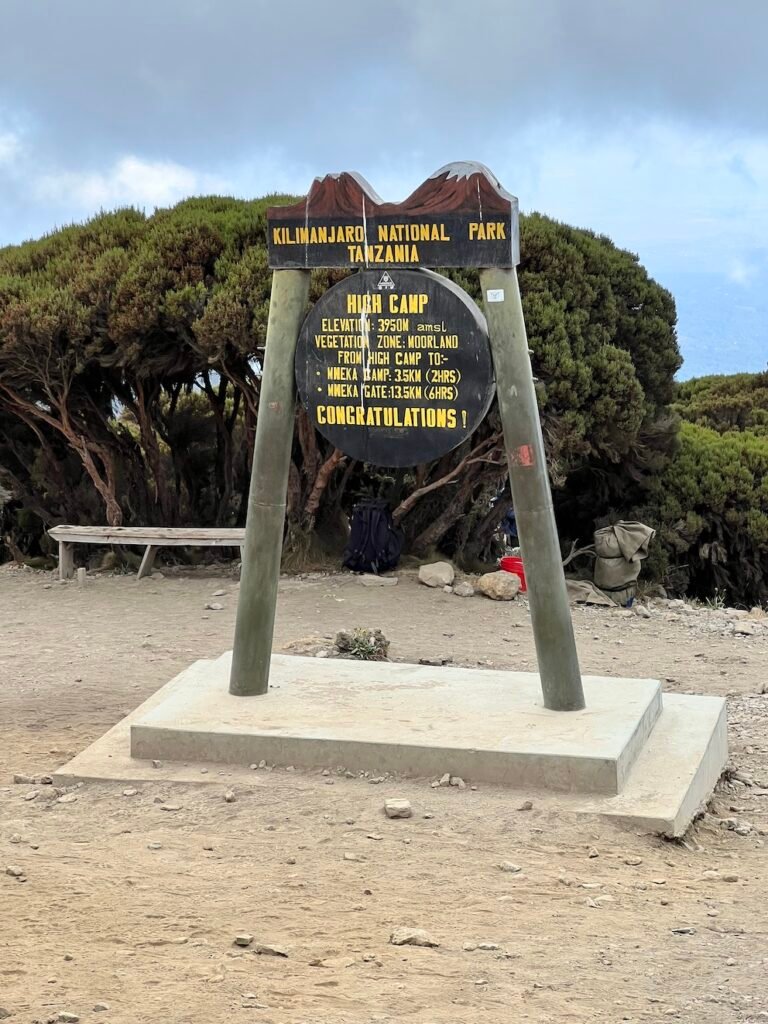

The trail took us back into jungle line, and the path became at times treacherously slippery with mud. Mud is slightly less of a problem when you’re climbing uphill, but when you’re going downhill, momentum combined with slick ground made for a few close calls even among the sure-footed porters descending the mountain. We reached Mweka camp with a few hours to relax before dinner was served.
Mweka camp was a well-kept camp with a clean concrete toilet building and wash area, tents were set-up between trees (which reappeared now that we’re at an elevation low enough to have trees). It felt slightly surreal to be at what looked like your typical North American summer camp – when this morning we were standing at the Top of Africa, but there we were. It felt odd to relax again after everything I just went through, the accomplishment still felt surreal. I guess the spirit takes some time to leave the top of the mountain.
